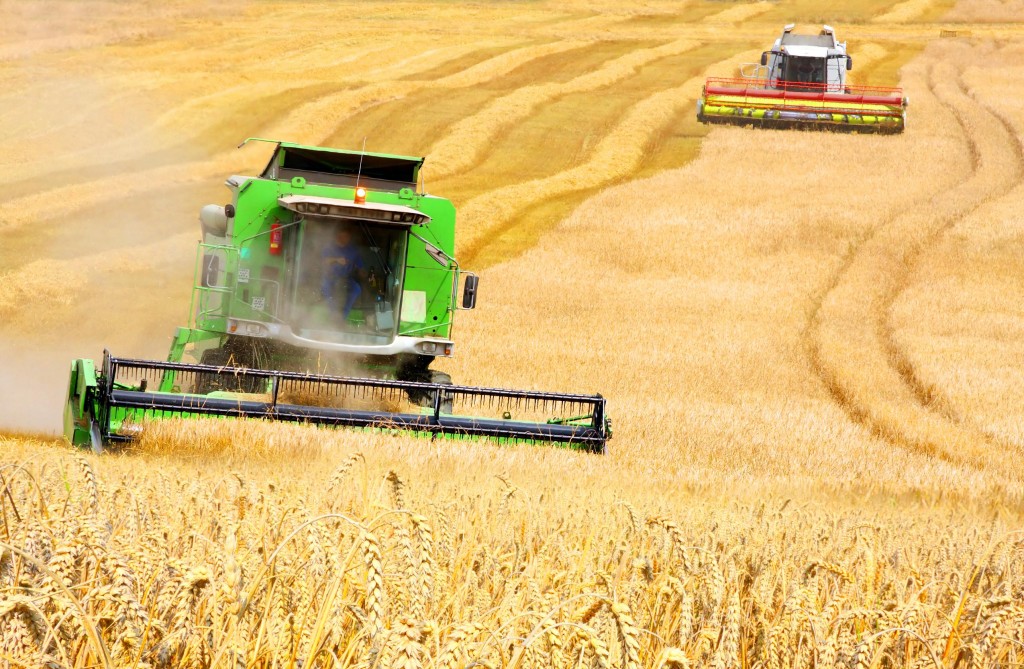ASTANA – Prime Minister Bakytzhan Sagintayev reviewed the nation’s harvesting progress Sept. 12, noting the quantity of Kazakh grain has increased this year. The gross grain harvest is expected to exceed 19.5 million tonnes, which will raise the country’s export potential to eight million tonnes.
Harvesting operations are currently underway in all regions, said First Vice Minister of Agriculture Kairat Aituganov. As of the report date, 11.6 million hectares have been harvested and 14.7 million tonnes of grain have been cropped with an average yield of 12.6 centners per hectare. The harvesting speed exceeds the last year’s level by 2.5 million hectares, or 16 percent.
Approximately 76.7 percent of all crops have been harvested in the three main grain producing regions. The Kostanai region has collected 3.8 million tonnes; Akmola, 3.5 million tonnes and North Kazakhstan, 3.3 million tonnes.
The harvest is complete in the South Kazakhstan, Zhambyl and West Kazakhstan regions, where farmers collected 1.4 million tonnes. The yield is 3.5 percent more than last year.
Barley harvesting has nearly concluded; 1.8 million hectares, or 86 percent of the area, have been reaped and 2.7 million tonnes of crop collected. Kazakh farmers have harvested about 24 percent of oilseeds areas, exceeding the 2016 level by 10 percent. Close to 1.2 million tonnes have been threshed. Vegetable crops are still being gathered in the Almaty, Zhambyl and South Kazakhstan regions. To date, 76 percent of the areas have been harvested and 3.1 million tonnes of vegetables collected, a 13-percent hike over last year.
The government supports farmers during harvesting, providing a discount on the necessary diesel fuel and organising reception points for crops throughout the state. The reception points are ready, according to the Ministry of Agriculture press service.
Kazakhstan has introduced a new methodology for determining and assigning granary ratings. Beginning this year, Food Corporation will stop working with grain-receiving enterprises that have an unreliable rating.
To improve the quality of this year’s grain, measures have been taken to support seed production and the use of mineral fertilisers. As a result, this year’s share of third-class grain is 76 percent compared to last year’s 44 percent. Grain containing more than 25 points has reached 47 percent in contrast to 9 percent in 2016.



